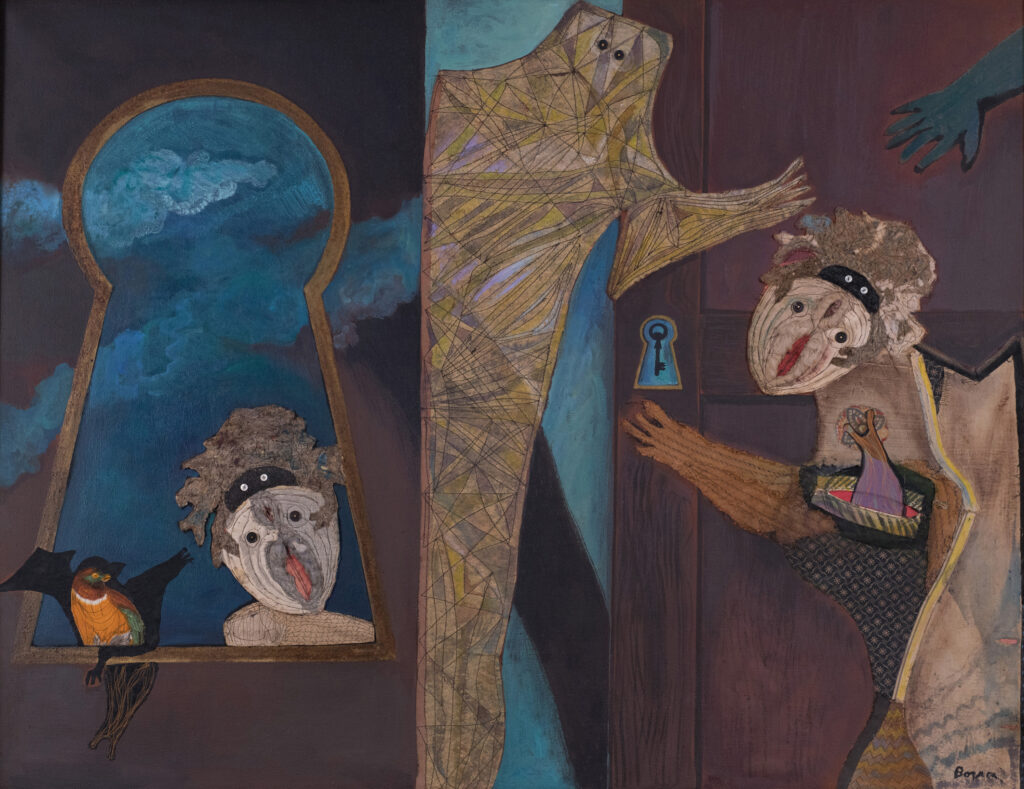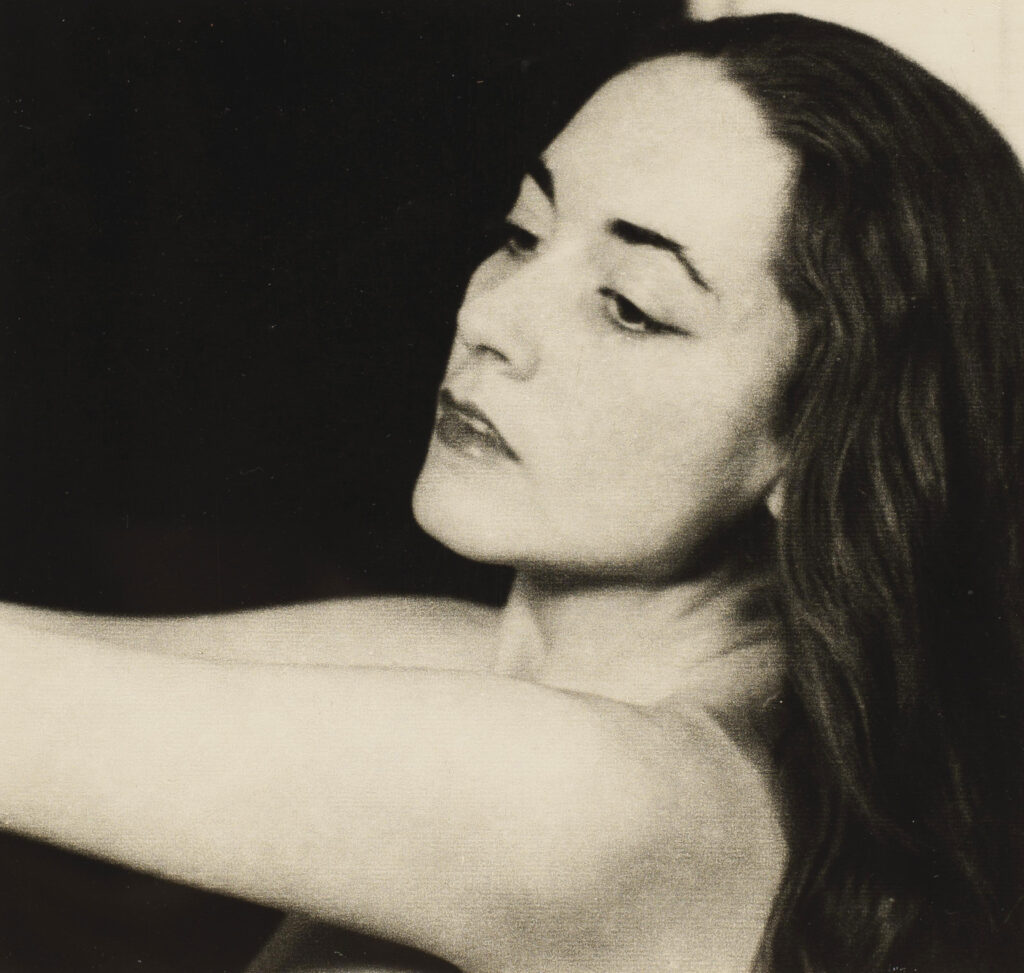Your currently viewing RAW Modern | Switch to RAW Contemporary
La Clef des Champs, 1970
Catalogue essay by Blanche Llewellyn
« Je suis une autodidacte et une ignorante, mais mon savoir est celui d’une magicienne »
Bona de Mandiargues was a Surrealist Italian-French artist, writer, and translator. In Paris, she met the poet André Pieyre de Mandiargues (whom she married in 1950), and through whom she became acquainted with Breton, Ponge, and Paulhan.
After a formative phase stylistically influenced by the example of her uncle, Filippo de Pisis, Bona developed a figurative painting style nourished by collecting numerous aquatic, mineral and plant objects. Out of these interests, she developed an increasing fascination with the ways in which these natural objects had the ower to enchant or disturb – drawing her closer to the mainstream ethos of Surrealism. In 1958, Bona developed a technique that would come to characterize her work in the following years: during a trip to Mexico she discovered , by chance, the suggestive power of the patterned fabrics of the region, which had been used to line her husband’s jackets. Employing a sewing machine for the assembly of different materials, she began producing fabric collages which conveyed a more surrealist edge than the more classic medium of her previoius oil paintings.
The title of this work refers to a French proverb dating back to the Middle Ages. “Prendre la clef des champs” was used to describe escaping social control or constraints imposed by society. It conveys the idea o liberation, particularly from social norms and expectations.
La clef des Champs represents a surreal universe, composed of sewn-on buttons, textiles and paint. The composition depicts three strange figures with vagina like features, emerging from shadows, surrounding a mysterious keyhole, hinting at a hidden mystery to be uncovered, a perverse seclusion on the other side of the door. The image of both the lock and key (with obvious Freudian symbolism) was often used by the surrealists to express their own desire for an intuitive knowledge of the universe and to express their aspiration to liberate the mind. In Bona’s case, the key seems to equally serve as a portal to assist the viewer in unraveling the canvas’s untold secret.
The scale of the artwork, aligning with the mystical ambience, is distorted. The figure looking through the keyhole appears again, to the left, on the other side of the door, teasing or inviting the viewer to partake in the magical scene.
Bona’s picture was possibly inspired by Composition (figure féminine sur une plage) by Pablo Picasso, 1927.

